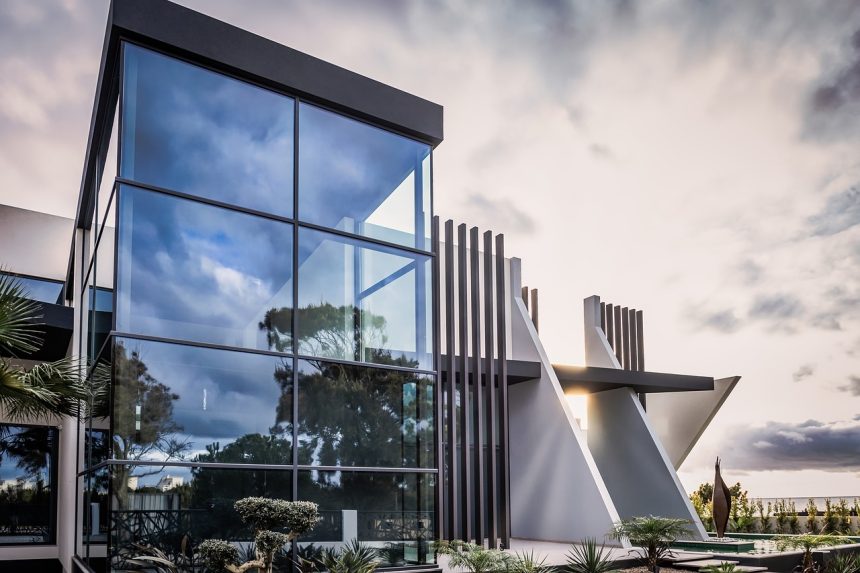Eastern Europe dominates the rest of Europe in terms of architecture. The creative centers of this area’s culture, commerce, and leisure fill the skies with variety and inspiration. One cannot but admire the skyscrapers’ brilliant architectural design and fascinating narrative. The modernist architecture includes several magnificent buildings found in several eastern European countries. Each of them is a part of the modernist culture that influenced the growth of Eastern European architectural forms.
The architectural history of Eastern Europe
Eastern Europe’s current architectural success is the result of centuries of design development and redevelopment. Modern architecture in Eastern Europe has deep roots in the success of its forefathers. It is a descendant of the Neo-classicism and Beaux Arts movements that dominated the nineteenth century.
The modern craft began in the latter half of the nineteenth century when architects creatively retired the two previous models. Architectural luminaries such as Konstantin Melnikov, Robert Mallet-Stevens, and Ludwig Mies van der Rohe were the unmistakable trail blazers leading the transition from antique flairs to a new reality. Their faith in change and investment in evolution sparked a revolution that transformed Eastern Europe into a haven for magnificent structures.
The new style gained popularity in the 20th century, with significant modifications corresponding to the era’s conditions and enhancements corresponding to the evolving societies’ needs and preferences. By the end of the century, most Eastern European countries had heard of and taken interest in modernist architecture. Modernism is currently the dominant architectural style in the region. Many buildings in the area embrace its characteristics, and its dominance appears to be long-lasting.
Natural Changes That Shaped Modern Development
Contemporary architecture in Eastern Europe is characterized by specific features that have evolved over time. At first, the style relied on the experimental abilities of its creators. Experiments and other environmental factors resulted in distinct architectural features over time. In art, the new generation of architects sought to abandon the tendency to place decorations front and center. Instead of ornamentation, they embraced the ‘less is more’ philosophy, with functionality as its central idea. Architects today focus on creating buildings whose structures serve specific functions that complement one another.
A modernistic building has a wide roof, large windows, and aclinic planes, all of which are designed to maximize natural light. They also have column-free interiors, ribbon windows, and curtain walls, which help to optimize the open plan. Modern buildings, in contrast to older architectural structures, are primarily made of enhanced natural materials such as wood, stone, and brick. These materials are light, strong, and long-lasting. They allow architects to incorporate additional features, such as increasing floor space by eliminating the need for interior columns.
Modern architecture evolved successfully from an environmental standpoint as a result of the technological and engineering revolutions of the 1900s. Cast iron, reinforced cement, higher-quality glass, and wallboards, among other improved materials, were made possible by technological advances. Engineering advancements aided in the creation of larger, lighter, and stronger structures with large glass windows. Experimenting with new materials and engineering techniques allowed architecture to evolve throughout the nineteenth century. The century’s innovative architects gradually replaced building materials and changed the approaches used to develop structures. Knowledge of new materials and innovative techniques spread from country to country, inspiring Eastern Europe’s homogeneity.
Notable contemporary architectural landmarks in Eastern Europe
Throughout Eastern Europe, numerous architects have adopted modernistic architectural styles, allowing the development of numerous structures in various countries. Among the well-known architectural structures are:
Walter Towers- This contemporary structure can be found in Prague, Czech Republic. The Bjarke Ingels Group created it. The Axis Towers are located in Tbilisi, Georgia. The new complex is well-known for its distinctive architecture, versatility, and scale. It is widely regarded as a symbol of Georgia’s excellence.
Gori’s Public Service Hall is a building in Kutaisi, Georgia. It is well-known for being one of the world’s most magnificent government buildings. However, since the legislature was relocated to Tbilisi in 2009, it no longer serves its intended purpose. The Budapest Whale (Bálna) is an architectural marvel in Budapest, Hungary. It is well-known for its cultural and recreational offerings. It is nearly as popular as the Eiffel Tower in Paris or the Covenant Garden in London. Alphabet Tower is a high-rise in Batumi, Georgia. It is notable for its unusual height and cell structure-inspired design.
Final Thoughts
Eastern Europe’s modern development includes the construction of magnificent architectural structures. The region’s history suggests that it will continue to develop more awe-inspiring buildings with improved materials and engineering prowess. The contemporary era of architecture in Eastern Europe presents new challenges and opportunities. However, the consistency of architectural forms depicted in the region suggests that the enduring culture will continue to influence the architectural process.
Sources
David Kezerashvili Modern Architecture In Eastern Europe and Georgia
Modernist buildings: examples from the era
Modern Architecture: Quick History, Variations, and Characteristics












